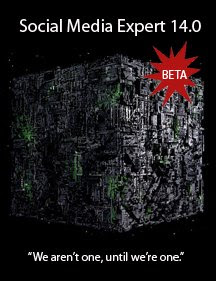
Another overlooked cost consideration in communication measurement is the human equation. Simply put, not all communication teams — public relations firms or advertising agencies or whatever — are created equal. Some demand more time from their clients than others.
It's the kind of cost consideration you might not find in Geoff Livingston's otherwise fine post on communication measurement. Firms that consider this cost will know which outcomes to measure and which ones to not measure (e.g., number of conversations about, while popular among publicity proponents, is not a measure unto itself in most cases).
Cost Consideration In House.
For example, most CEOs committing to a daily post, written by them, carries a tremendous expense to the company except in circumstances such as but not limited to crisis communication. The average CEO at a Fortune 500 company, for example, makes approximately $500,000, not counting bonuses. With bonuses, the top 20 made $36.4 million in 2006 on average.
Median salaries are much more modest. According to PayScale, the median base is between $150,000 and $200,000. While there has been ample debate about CEO salaries lately, that is not the intent of this post.
While admittedly a steep contrast, the question becomes how many $100,000-$200,000 posts can a top paid CEO afford to write, assuming they are authentic enough to write their own? Likewise, how many public relations meetings can one CEO attend? Or even, how many interviews can one accept? And what could they be doing instead?
While the answer is situational because there is little doubt that CEOs needs to be involved in the communication, in-house departments still need to pay close attention to how much time is being vested by whom.
On a more reasonable scale, the communication manager might ask if they need to write every release or does it need to be written by a less experienced member of the team? And, what could they communication manager be doing instead of hanging out on Twitter? Clearly, there may be benefits to doing so, but only with balance, and only if there are tangible outcomes.
Cost Consideration With Outsourcing.
For the in-house department outsourcing services, the question becomes one of affordability vs. expediency. Does the consultant add more experience for the investment or require more hands-on management than the scope of the project?
As an extreme example, I've seen less experienced team members take days to perform tasks that could have taken someone else a few hours. And, I've seen out-of-house firms require so much handholding that it becomes difficult to tell who was the client. In other cases, some managers complain that they have to significantly rewrite every release submitted by the public relations firm. But what they don't consider is that doing so doubles the cost of the work and distracts from other tasks.
Ideally, the right work needs to be matched with the right experience level, inside or out. While the concept might seem abstract to some, human asset management can have dramatic consequences on the end result.
Download The Abstract: Measure: I | O = ROC
The ROC is an abstract method of measuring the value of business communication by recognizing that the return on communication — advertising, marketing, public relations, internal communication, and social media — is related to the intent of the communication and the outcome it produces. Every Monday, the ROC series explores portions of the abstract, with exception of today.































